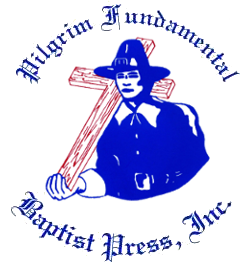Freedom is never cheap nor is it free; there are different symbols of freedom that may have a different meaning to various people. This PFBP Gospel tract talks about The Symbol of Freedom. Here are is what the tract says:
“IN New York harbor, standing on approximately ten acres of land, is the Statue of Liberty. Standing there with her torch raised up to the sky, she greets all who would enter New York harbor. To the United States of America and the world, the Statue of Liberty is a symbol of freedom.
NEARLY two thousand years ago on a hill called Mount Calvary stood a cross, an instrument of death for criminals. In time it became a symbol of death. No doubt many crosses were erected on Calvary on which many people died. But on this one “special” cross was One who did not deserve to be there. He was completely innocent of any crime whatsoever. He was there, however, because of you and I. This One who hung on that cross was Jesus Christ, the Son of God. He was there as our substitute, for we read, “Christ hath redeemed us from the curse of the law, being made a curse for us: for it is written, Cursed is every one that hangeth on a tree.” (Gal. 3:13) As our substitute, Christ “his own self bare our sins in his own body on the tree, that we being dead to sins, should live unto righteousness: by whose stripes ye were healed.” (I Peter 2:24) You see, this was necessary “For all have sinned, and come short of the glory of God.” (Rom. 3:23) as a result of the sin of Adam (Rom. 5:12). Since man is a sinner by birth and deed, it was necessary that a perfect sacrifice be offered, which we have in Christ, as we read in I Peter 2:22, “Who did no sin, neither was guile found in his mouth.” And again in I Peter 1:19, we find that His blood was the cleaning agent, “But with the precious blood of Christ, as of a lamb without blemish and without spot.” For “without shedding of blood is no remission” (Heb. 9:22). All of this took place on Mount Calvary and the cross, the symbol of death.
ORDINARILY, when we think of a tomb or grave we think of death, but to the Christian it means something else. You see, my friend, after Christ died on the cross, He was buried (Luke 23:52, 53) and three days later, praise God, He was raised from the dead (Luke 24:1-6; Acts 10:40; I Cor. 15:4; I Pet. 1:3). Not only was He raised from the dead bodily, but He was seen by many on different occasions—Mark 16:9; Matt. 28:9,17; Luke 24:15, 36; John 20:19, 26; 21;1; I Cor. 15:6,7. Today He sits at the right hand of God the Father (Heb. 10:12) where He makes intercession on our behalf (Rom. 8:34; Heb. 7:25). Because Jesus Christ lives, we who have received Him as personal Saviour will live forever with Him in heaven (John 5:24; Rom. 5:21; John 11:25; Rom.14:8). And so you see, my friend, to the Christian, the tomb, the empty tomb, is a symbol of freedom.
MY friend, if you will this day repent of your sins, confess them to Jesus Christ and ask for His forgiveness based on His shed blood, and ask Him to save you for all eternity, then to you the tomb will become a symbol of freedom. Those who have called on Jesus Christ for salvation may know that they are saved (John 5:11-13) and that the grave (death) will not hold them, for they are free from it for they will live with Christ.
IN the name of Jesus Christ, I invite you to receive Him as your own personal Saviour — today!”
This 2-color tract is available from Pilgrim Fundamental Baptist Press for a contribution of $2.00 per 100 copies, plus postage.
